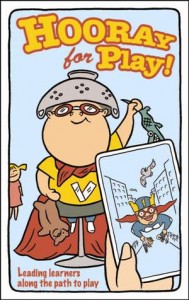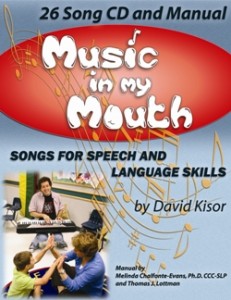We recently came across a wonderful review of the popular Sandwich Stacking Game by Melissa & Doug on TeachThrough. Here is everything you have ever wanted and need to know about the Sandwich Stacking Game and how a parent or educator would incorporate it into lessons for his or her child:
 Age level: Preschool, Early Elementary
Age level: Preschool, Early Elementary
Description: This silly game come with two sets of bread-shaped gloves and fourteen sandwich fillings that attach with velcro to the bread. Add twenty sandwich cards and a booklet with ten different games you can play with the materials, and you have a recipe for a great game.
Skills & Modifications: First of all, I should mention that I love any game that comes with instructions for multiple games. The fact that this comes with instructions for TEN games makes it that much more valuable to me, and it makes my job easier! I can find games that meet the skill level of my student, and then modify them as needed. Also, while I have listed below many ways in which I focus on target skills with these materials, I always end the activity by allowing the student to choose a game or to have free play with the materials for a couple of minutes.
Expressive Language – Students are usually highly motivated by these materials, so I use them to create opportunities for expressive language. Sometimes I’ll have the student create any sandwich they want and then describe it to me. Other times I will create sandwiches with the goal of targeting specific words or phrases that I am working on with the student.
Alike & Different – Sometimes I’ll have the student make two sandwiches, then describe how the two are alike and different. This provides and opportunity to talk about different ingredients, but also to discuss order of ingredients using words such as top, middle, and bottom.
Block Imitation – This is another game that, while it does not use blocks, can be used to test for generalization of block imitation skills. You can use the pictures included with the game, but those are all limited to four ingredients on each sandwich. For some students I take pictures of bigger sandwiches I have made with the game materials and have them recreate it based on the picture.
Scanning – I use this frequently to practice scanning skills. I lay out all of the ingredients on the floor (though be careful if the floor is carpeted, the velcro pieces may stick!) The student has to look at the picture card or listen to my instructions and find the correct piece. If we are playing with a peer, scanning may be more challenging because the peer may pick up the piece first, causing your student to have to scan once more to find the piece needed.
Peer Play – This is another great game for peer or sibling play. Students are highly motivated by the materials, and are frequently interested to see what other people are making as well.
Pros: This is one of those games that consistently causes giggle-fits with my students. It’s silly, challenging, active, and fun. Oh, and it’s machine-washable.
Cons: I have no cons for this game. It is a little pricey compared to most games and toys I purchase, but the materials are high-quality (which is usually the case with Melissa & Doug products.)
Cost: $29.99 You should invest in this game if: your student or child is highly motivated by active games, you are looking for materials to increase potential for peer play, or you are working with a range of ages at the same time.
ABLLS: B6, B12, B20, C41, K5, K9, K14, L2, L12, L22
VB-MAPP: VP-MTS 6, VP-MTS 13
Written by Sam Armstrong, MSEd, BCBA



 Our pick this week is the
Our pick this week is the 


.gif)
 Remember, this week only, take 15% off your order of the
Remember, this week only, take 15% off your order of the 
